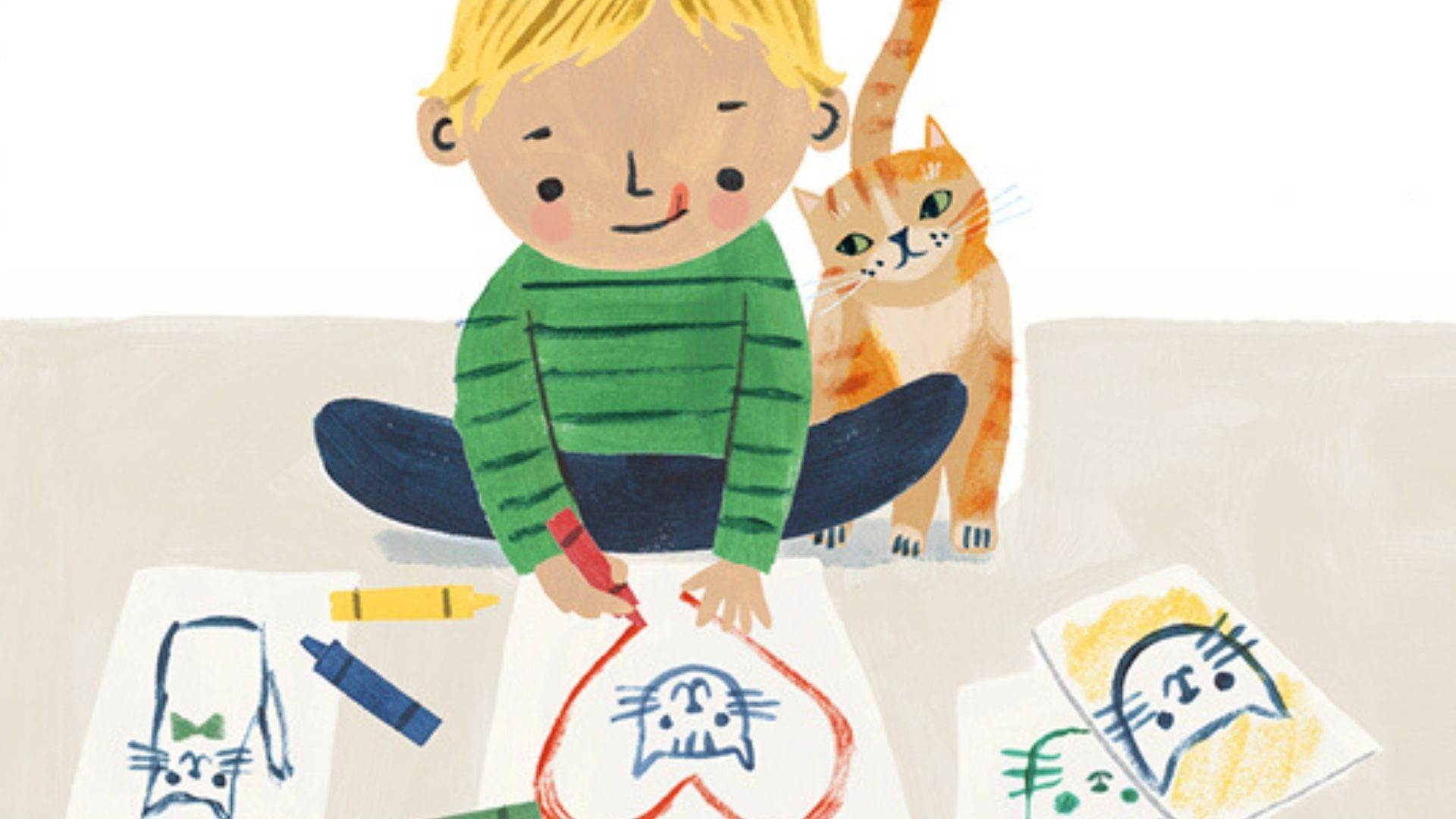Puppy talk and cat chat: How to talk to animals
Published on: 07 April 2022
Dr Jess French isn't just a brilliant children's author - she's also a vet, and a bit of an animal whisperer! Here, she shares some tips on how children and grown ups alike can understand their furry friends.
 Illustration: Penelope Dullaghan
Illustration: Penelope Dullaghan
I absolutely love all animals. When I was younger I used to hope and dream that I would one day wake up with the magical power to communicate with them. In some ways, my dream came true, but in order for that to happen, my mindset had to change a little. Instead of wishing that my pets could suddenly learn how to talk, I had to learn to understand the signals that these animals were already giving me. I read books about animal behaviour and watched animals interacting with one another and gradually I came to realise that the clues had been there all along, I just had to learn to look for them.
I learned that the position of a dog’s tail could tell me if it was happy or sad, that cats could tell me they were furious just by moving their ears and that both of these animals had a whole vocabulary of sounds, which they could use to tell me how they felt and what they wanted.
You too can learn to communicate with animals if you want! It takes a little bit of time and practice but it’s more than worth it. For now, while you’re still working on purrfecting your cat and dog body language skills, here are some tips to help you to get along with the furry friends in your life.
Ask what they like
If only we could ask our animal friends exactly how they like to be stroked and which games they like to play, life would be so much easier wouldn’t it? But we can do the next best thing – ask the people that have spent time with them. If you’re interacting with the pet of a friend or family member, ask them where their pet’s best tickle spots are or which are their favourite toys. If you’re welcoming a new furry friend into your family, ask the people that work at the rescue centre or the breeder what kinds of thing it enjoys.
Take it slow
How would you feel if someone rushed over and rubbed you on the head without saying hello first? Or waved a toy in your face without explaining what they wanted to play? It would be quite confusing, wouldn’t it? Animals feel the same way. Take it slow and introduce yourself by holding out a hand for them to sniff or holding a toy a short distance away to get their attention.
Be gentle
Whenever you touch an animal, make sure to use a soft, open hand. Avoid the tail, ears and paws and never prod, poke or hit.
 Illustration: Penelope Dullaghan
Illustration: Penelope Dullaghan
Read the signals
Our animal friends may not be able to use words to communicate with us but they can still tell us how they feel. Animals use their bodies to show us when they are happy, sad, frightened or angry. We just need to learn to read their signals!
Let them go when they have had enough
If an animal walks away whilst you are stroking or playing with it, don’t chase it. It may be tired, fed up or just want some space. Let it go when it asks and it will be much more likely to choose to interact with you again next time.
If you follow these rules whenever you meet a new furry friend you will soon be the best of friends!
Take the quiz! Can you really talk to animals?
Follow Dr Jess French on Twitter or read our review of Cat Chat
You might also like...
Explore our favourite books all about animals and nature!
Books about animals for toddlers
These books are perfect for entertaining toddlers and younger children that love animals, with everything from hilariously silly stories to early learning tales.
Books about animals for young readers
Enjoy some of our recommended books for younger children about animals, from classics like Dick King-Smith's Sheep Pig to modern favourites like Ed Vere's Mr. Big. These books are perefect to cuddle up and read with little ones, and for more confident kids to read themselves.
Animal stories for older readers
These chapter books are perfect for engaging children who love animals, with something for everyone from reluctant readers to those reading above their age level.
Topics: Non-fiction, Animals, Features








